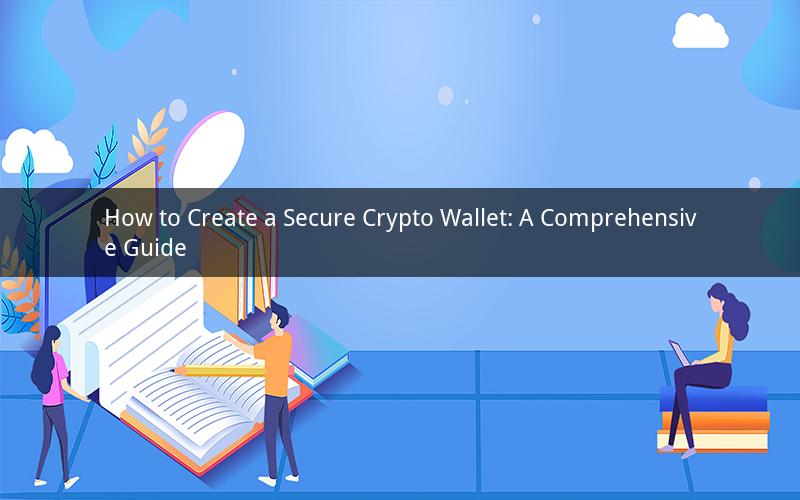
Creating a secure crypto wallet is crucial for protecting your digital assets from unauthorized access and potential theft. With the increasing popularity of cryptocurrencies, it has become essential to understand the best practices for maintaining the security of your wallet. In this article, we will discuss the steps to create a secure crypto wallet and highlight the key considerations to keep in mind.
1. Choose the Right Type of Crypto Wallet
Before creating a crypto wallet, it is essential to choose the right type that suits your needs. There are mainly three types of crypto wallets: hardware wallets, software wallets, and web wallets.
- Hardware wallets: These wallets store your private keys offline, making them more secure against online threats. They are recommended for storing large amounts of cryptocurrencies.
- Software wallets: These wallets are installed on your computer or mobile device and provide access to your cryptocurrencies online. They are suitable for smaller amounts and offer more flexibility.
- Web wallets: These wallets are hosted online and provide access to your cryptocurrencies through a web browser. They are convenient but less secure compared to hardware and software wallets.
2. Generate a Strong Password
A strong password is the first line of defense for your crypto wallet. When creating a password, follow these guidelines:
- Use a mix of uppercase and lowercase letters, numbers, and special characters.
- Avoid using easily guessable information, such as birthdays, names, or common words.
- Create a unique password for your crypto wallet and do not reuse it for other accounts.
3. Enable Two-Factor Authentication (2FA)
Two-factor authentication adds an extra layer of security to your crypto wallet. It requires you to provide a second form of verification, such as a code sent to your phone, in addition to your password. Here's how to enable 2FA for your wallet:
- Visit the wallet's settings page.
- Look for the "Two-Factor Authentication" or "2FA" option.
- Follow the instructions to set up 2FA, which may involve scanning a QR code with your phone or entering a code provided by an authentication app.
4. Keep Your Private Keys Private
Your private keys are the digital equivalent of the keys to your crypto wallet. If someone obtains your private keys, they can access and control your cryptocurrencies. To keep your private keys secure:
- Do not share your private keys with anyone, not even friends or family members.
- Do not store your private keys in a text file or on your computer, as they can be easily accessed.
- Consider using a paper wallet, which is a physical copy of your private keys. Store it in a safe and secure location.
5. Regularly Update Your Wallet Software
Keeping your wallet software up-to-date is crucial for maintaining its security. Updates often include patches for vulnerabilities and improvements in security features. Here's how to update your wallet:
- Check the wallet's official website or app store for the latest version.
- Follow the instructions provided to download and install the update.
- Backup your wallet before updating to ensure you do not lose your cryptocurrencies.
6. Be Wary of Phishing Attacks
Phishing attacks are a common method used by cybercriminals to steal your private keys and cryptocurrencies. To avoid falling victim to phishing attacks:
- Be cautious of emails, messages, or calls asking for your private keys or wallet information.
- Verify the legitimacy of any requests by contacting the wallet provider directly.
- Use secure and trusted websites to access your wallet and never click on suspicious links.
7. Use a Secure Internet Connection
When accessing your crypto wallet, ensure you are using a secure internet connection. Public Wi-Fi networks are often insecure and can be easily intercepted by cybercriminals. Here's how to stay secure:
- Use a virtual private network (VPN) to encrypt your internet traffic and protect your wallet.
- Avoid accessing your wallet on devices that may be compromised or infected with malware.
- Use a strong and unique password for your internet connection to prevent unauthorized access.
In conclusion, creating a secure crypto wallet involves choosing the right type of wallet, generating a strong password, enabling two-factor authentication, keeping your private keys private, regularly updating your wallet software, being wary of phishing attacks, and using a secure internet connection. By following these best practices, you can help protect your digital assets and ensure a safe and secure experience with cryptocurrencies.
Questions and Answers:
1. Q: Can I use the same password for my crypto wallet and other online accounts?
A: No, it is essential to use a unique password for your crypto wallet to prevent potential breaches in other accounts.
2. Q: Is it safe to store my private keys on a USB drive?
A: While storing your private keys on a USB drive can provide some level of security, it is still susceptible to physical theft or damage. Consider using a hardware wallet or a paper wallet for enhanced security.
3. Q: Can I share my private keys with a friend to access my crypto wallet together?
A: No, sharing your private keys with anyone, even friends, can lead to unauthorized access and potential theft of your cryptocurrencies.
4. Q: Is it necessary to enable two-factor authentication for my crypto wallet?
A: Yes, enabling two-factor authentication adds an extra layer of security, making it more difficult for cybercriminals to gain access to your wallet.
5. Q: Can I use a public Wi-Fi network to access my crypto wallet?
A: It is not recommended to access your crypto wallet on public Wi-Fi networks due to the risk of interception and potential unauthorized access. Use a secure and trusted internet connection instead.